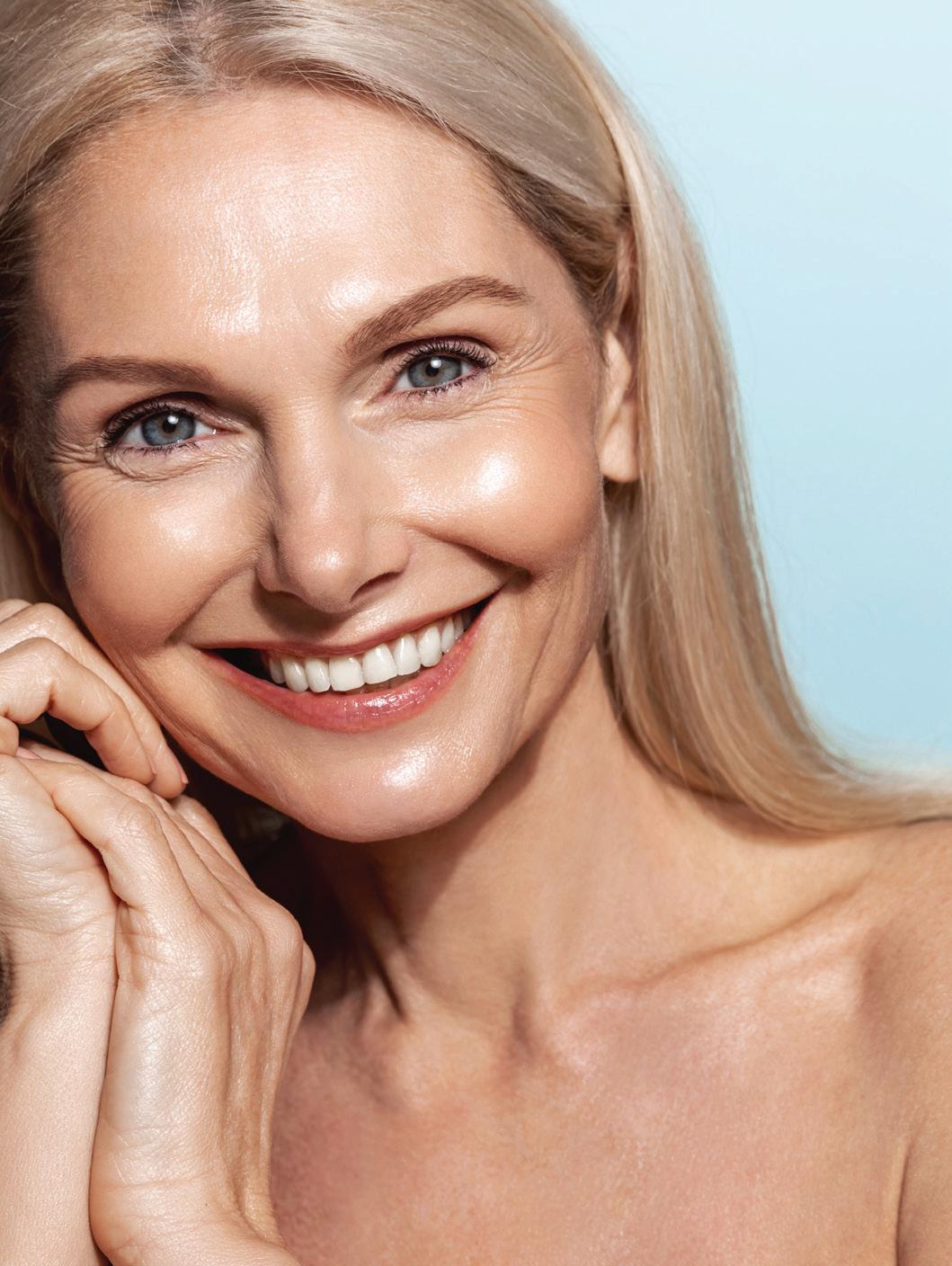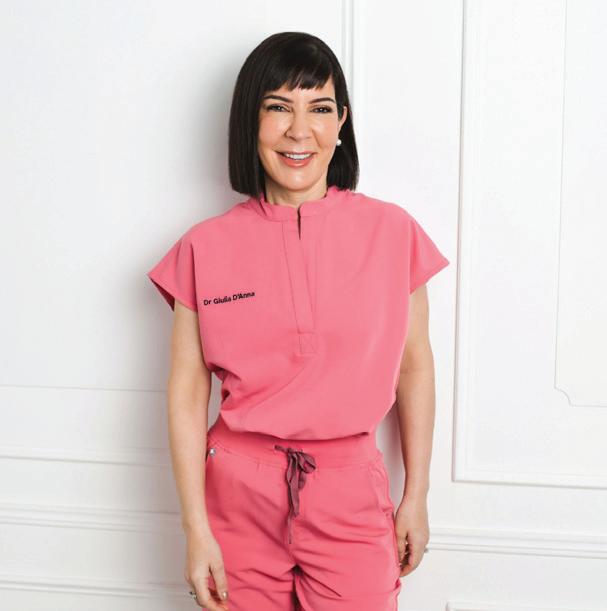
4 minute read
The Best Winter Skin Fix For Plump and Glowy Skin .
By Dr Giulia D’Anna
As the mercury drops, more Australians are experiencing itchy, dry, and scaly skin, symptoms which are frequently associated with asteatotic eczema aka the ‘winter itch’. Cold months can be especially difficult for those with sensitive skin as they are exposed to the harsh outdoor elements or overheating from indoor heating, extra clothing layers, and electric blankets. A handful of common skin conditions tend to develop or worsen with the cold including rosacea, cold urticaria and seborrheic dermatitis.
According to the Eczema Association of Australia (EAA) 72% of eczema sufferers say weather is the biggest trigger for flare ups. Cold and dry weather saps the skin of its plumpness as the lack of humidity depletes the skin barrier of moisture, leading to these symptoms in people without eczema too. Fighting back against the effects of cold weather on the skin is all about boosting hydration and protecting the skin with a physical barrier to minimise weather-related damage.
This winter season a noticeable trend towards more intensive skin treatments is emerging, driven by advancements in skincare. On top of combatting the environmental conditions that deplete the skin in winter, the cold months also happen to be the ideal time to address deep-seated skin concerns due to reduced sun exposure and heat. Paired with heavy-duty moisturisers, vitamin-loaded serums and oils, winter skincare is all about prepping the skin to reveal a fresh and youthful exterior in time for spring.
Hydration and skin boosters
Hydration is paramount to winter skin care as it prevents cold air and indoor heating from stripping moisture from the skin. New developments in moisturising and skin boosting treatments utilise deep-tissue hydration that also improves skin texture and elasticity. Topical solutions containing hyaluronic acid, ceramides, glycerin, shea butter, and plain old petroleum jelly are hero ingredients that provide long-lasting protection from winter dryness and prepare the skin to better withstand harsh conditions.
Humectants like glycerin and hyaluronic acid helps skin retain moisture while occlusives like shea butter and petroleum jelly create a waterproof barrier that prevents painful skin cracking.
‘Hardcore treatments’ on the rise
Winter’s reduced sun exposure and cooler temperatures create an optimal environment for more aggressive skin treatments that few would be inclined to try at the height of summer. The sun’s rays are less intense which means the risks associated with photosensitivity and pigmentation post-treatment decrease, making it the perfect time to undertake more intensive procedures.
Laser treatments
On a similar note, laser skin resurfacing treatments which can be invasive on the skin should ideally take place in the winter months. Known for its efficacy in correcting a range of concerns from fine lines and wrinkles to acne scars, laser resurfacing nonetheless comes with side effects like itchiness, redness, swelling, and pain as the skin heals. The cooler winter climate minimises this as sun exposure post-treatment is drastically reduced, leading to a more comfortable and predictable recovery process.
Heavy duty peels
Chemical peels, particularly those that penetrate deeply into the skin’s layers is another type of treatment which should ideally take place in winter. Designed to remove dead skin cells and promote cell regeneration, improve pigmentation, texture and skin tone, chemical peels particularly render the skin to become more sensitive to sunlight. Winter, with its shorter days and lower UV index, is the best time for patients to undergo more intensive peels without the added risk of sun damage.
Correcting pigmentation in winter
Those with pigmentation concerns such as sunspots, melasma, and dark spots also benefit from treatment in the wintertime as pigmentation tends to become more pronounced with sun exposure. Winter provides a strategic opportunity to tackle pigmentation head-on via treatments like laser therapy and chemical peels which have increased efficacy due to the lower risk of sun exposure.
Though not without its drawbacks, winter is becoming the go-to season for intensive skin rejuvenation and repair. With a combination of tailored products and professional treatment, winter skincare is being touted by the experts as the new way to achieve your best skin ever.
Dr. Giulia D’Anna, founder of Dermal Distinction Academy, is a leading expert in skin and cosmetic injectables. With a background in dentistry from the University of Melbourne, she has advanced her knowledge in dermal science and non-surgical procedures through studies at the University of Pennsylvania and AACDS. A member of the Royal Australasian College of Dental Surgeons, Dr. D’Anna is recognised for her contributions to ethical aesthetics and skin care. She educates aspiring practitioners and hosts the Dermal Distinction Podcast, focusing on ethical practices in skin treatments. @dermal_distinction











